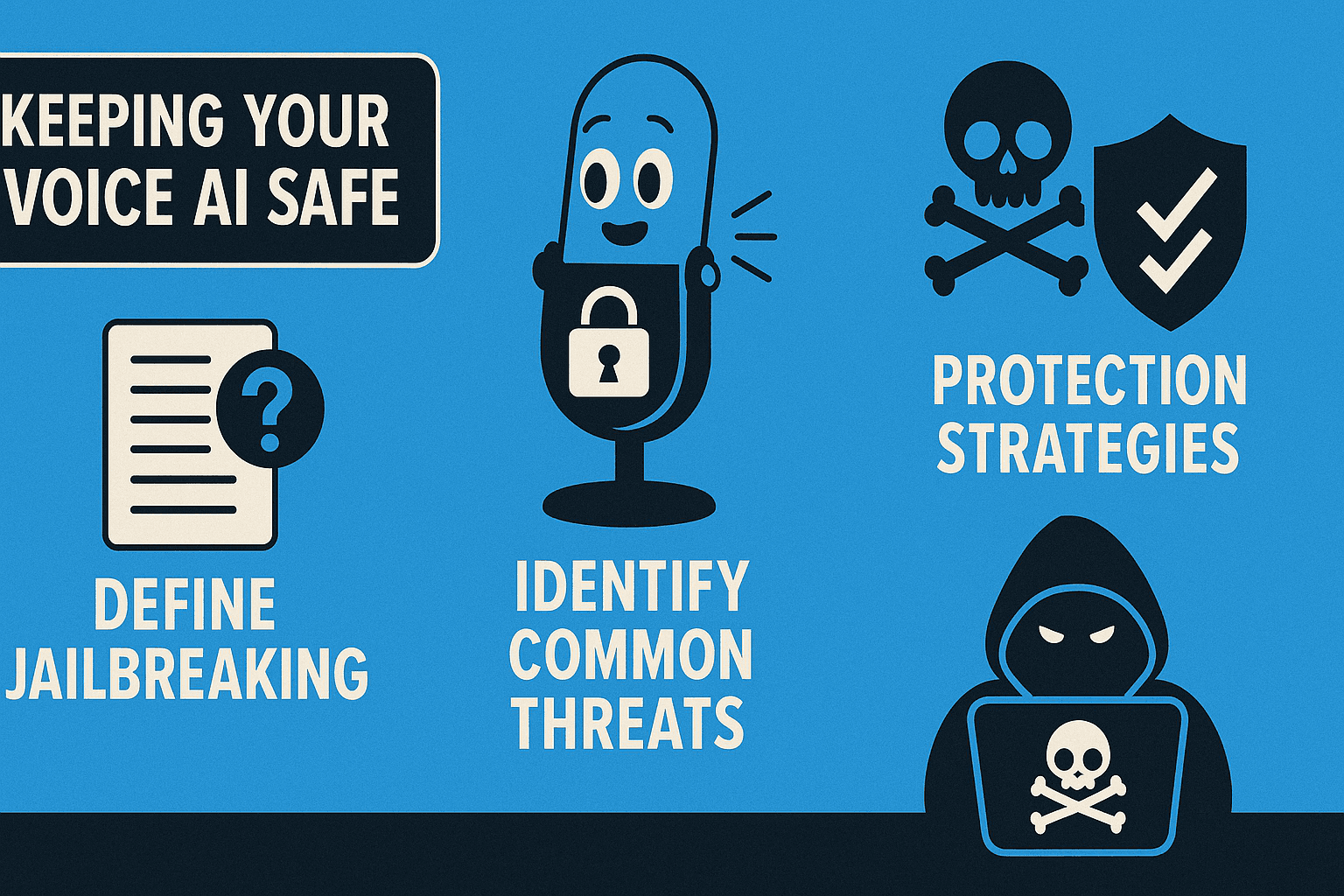How to Keep Your Voice AI Safe from Jailbreaking and Misuse
Implement multi-layered guardrails to prevent jailbreaking in Voice AI agents. Learn best practices for input/output filtering, sandboxing, and continuous monitoring to build secure and trustworthy AI systems.
Sujeet Jaiswara

As voice AI agents grow more advanced and human-like, it’s completely understandable to feel both excited and concerned about keeping them safe and trustworthy. Developers invest immense effort into building intelligent systems - so the idea that someone might "jailbreak" or manipulate them can feel unsettling. I understand how this could create anxiety about data security, ethical behavior, and user trust.
But don’t worry - there are clear, practical steps you can take to strengthen your system’s defenses and maintain full control. I’m here to support you with a structured, compassionate approach that helps protect both your AI and your users.
Key Guardrail Strategies
1. Sanitize and Filter Inputs & Outputs
Before your AI processes or responds, it’s important to sanitize and filter both user inputs and AI outputs. This helps detect:
- Manipulative or adversarial prompts
- Hidden or embedded instructions
- Toxic or unsafe content
I know it can feel tedious to manage all these filters, but this layer of safety ensures your AI doesn’t unintentionally generate harmful or unintended responses - giving you peace of mind that your users remain safe.
2. Use Specialized Guardrail Models
Consider purpose-built guardrail models, such as jailbreak detection or topic-control LLMs. These tools can automatically flag or block suspicious activity in real time. They help:
- Detect adversarial prompts that aim to bypass restrictions
- Reinforce safety boundaries
- Provide early warnings for potential policy violations
It’s reassuring to know that you don’t have to do everything manually - these models act as your intelligent safety partners.
3. Constrain Model Capabilities
Define clear operational boundaries for your voice AI. You can specify:
- The AI’s role and tone
- Acceptable topics and response styles
- Restricted domains or sensitive areas
I understand that setting limits may feel like you’re reducing creativity, but these guardrails actually empower your AI to perform confidently within safe parameters - reducing risk while maintaining personality.
4. Isolate Untrusted User Content
Treat all user-generated content as untrusted by default. Isolate and label it to prevent:
- Context contamination across sessions
- Data leakage or indirect manipulation
- Prompt poisoning attacks
This isolation ensures you can continue innovating without constantly worrying about hidden risks.
5. Enforce Least-Privilege Access
Following the least-privilege principle means granting your AI access only to what it genuinely needs. Use:
- Sandboxing
- Network segmentation
- API-level access controls
I know it can feel restrictive to limit access, but this step dramatically reduces damage in the rare case of a jailbreak - helping you sleep easier knowing your data and operations are safe.
6. Implement Human-in-the-Loop Oversight
For high-impact or sensitive tasks, include human review steps when:
- The AI’s confidence score is low
- The decision carries serious consequences
It’s okay to admit that full automation isn’t always best. Having a human safety net provides reassurance that no risky or compromised action slips through unnoticed.
7. Continuous Monitoring and Red Teaming
Regularly test your system through continuous monitoring and red teaming. This involves:
- Input/output logging
- Rate limiting to prevent brute-force attempts
- Simulated jailbreak tests
Think of this as your system’s "immune system" - always learning, adapting, and keeping your AI resilient.
Additional Recommendations
- Run adversarial testing regularly to validate your guardrails.
- Leverage safety APIs like Microsoft Prompt Shields or NVIDIA NeMo Guardrails for configurable, vendor-backed safety controls.
- Audit configurations often stay ahead of evolving jailbreak methods.
I understand how staying current can feel overwhelming, but consistent reviews and small improvements will keep your AI secure over time.
Conclusion
Voice AI agents are transforming how humans interact with technology. It’s natural to feel a mix of excitement and concern about managing that power responsibly. By adopting these layered, empathetic guardrails, you’re not just protecting data - you’re protecting people, trust, and the future of ethical AI.